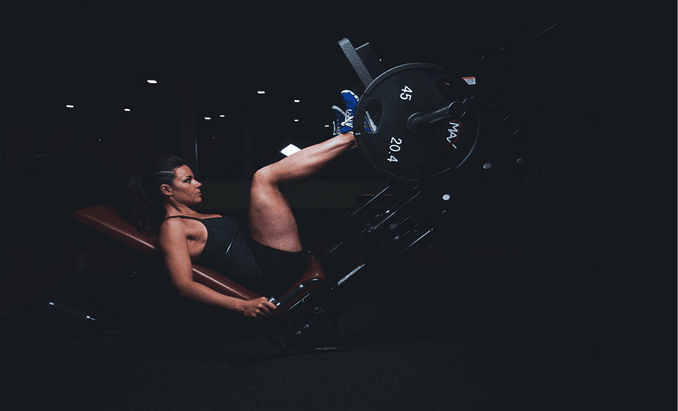
Nutrition And Lifestyle Are Also Critical For Healthy Bones, As They Are For A Healthy Body In General, Heed The Advice Above And In “Bone-Building Basics
Swimming won’t literally soften your bones, but it’s not the most effective exercise to combat osteoporosis, or a gradual weakening of the bones that often debilitates older women. To best prevent that dire development, you need exercises that put more stress on your bones, but that seems to create a dilemma for someone with joint problems. Do you save your joints with non impact exercise, or stick with higher-impact exercise for generating really strong bones?
So what will it be? Jogging? Skipping rope? High-impact aerobics? Plyometrics? Polka dancing? All excellent regimens, but for anyone with bad ankles or knees, the idea is horrendous. Not to worry – try bodybuilding or progressively adding increased resistance to your swimming and other non impact aerobic exercises. You simply need weight-bearing (not joint-jarring) exercise, and a bodybuilding program lets all your muscle groups bear weight.
What about walking, which is often recommended to combat osteoporosis? Brisk walking used to be considered adequate to protect bone density, but it may not be enough. Even so, it does help and it’s still a great fitness activity that’s relatively easy on the joints, even for those who can’t do high-impact activities anymore. If even walking is too hard on your joints or you have specific problems, however, check with a doctor or physical therapist about specific exercises to rehab your bad joints and to strengthen your body overall.
Research now shows that, along with good nutrition and a healthy lifestyle, strength training is key to strong bones. A top expert on the subject, Miriam Nelson, PhD, with the Jean Mayer Human Nutrition Research Center on Ageing at Tufts University (Med-ford, Massachusetts), says two weight-training sessions a week of less than one hour each are enough to build and maintain muscle and bone strength.
In fact, says the exercise physiologist and co-author of Strong Women Stay Young(Bantam, 1997), the more muscle you have, the more bone density you’ll have. But you don’t need to build bulging muscles to build your bones. You just need to build and maintain a basic level of strength. This will help you maximise your bone density now as a hedge against losses in later life.
Nelson’s regimen includes some bodybuilding standards like the lat pull-down, leg press and overhead press, with additional emphasis on hip abduction and addiction. If you don’t have access to these machines, you can work the muscles using ankle weights or cables. You may feel that you’re working your legs and gluts enough with stair-stepping, squats or leg presses, but abductor and abductor exercises put a different emphasis on the muscles and bones.
By now, everyone should know that she or he needs calcium for bone strength. Despite all the publicity, many of us don’t get enough. Vitamin D is also crucial for bone health, and many supplements combine the two nutrients. But you should still do more. Susan E. Brown, PhD, in Better Bones, Better Body (Harvard, 1996), lists 18 nutrients essential for healthy bones, including magnesium, zinc, manganese, boron and copper, and of course calcium and Vitamin D. Intakes of these nutrients are generally inadequate, she points out.
In general, a well-balanced diet that’s good for your health is good for your bones. But you need to pay attention to bone-building nutrients and especially get 1,000-1,500 mg calcium and 400-800 IU Vitamin D daily, along with other minerals, Brown advises. You should also avoid bone-robbers, which may cause the loss of bone density. These include smoking, excess alcohol and even excess caffeine. With caffeine, at least, getting extra calcium appears to counteract any calcium loss.
Some foods are excellent sources of bone-building nutrients: Nonfat milk and yogurt are popular calcium sources; nuts have magnesium, manganese and Vitamin E; and whole grains have manganese and zinc. Yet the newest bone-health food is onions! A recent study in the journal Nature found that onions helped prevent bone dissolution (called resorption) and increased bone density. The Swiss researchers hope to isolate the active compound so people won’t have to eat up to three onions a day. Large amounts of certain other vegetables, including broccoli, also helped to protect bone density. But how much broccoli can a girl eat every day?
As for your swimming, keep it up, but include devices and techniques to progressively increase the resistance, alternate with weight workouts 2-3 times a week, and for variety add in some brisk walking a few times a week. Nutrition and lifestyle are also critical for healthy bones, as they are for a healthy body in general, so heed the advice above and in “Bone-Building Basics.”
Stick with your active lifestyle. The concept of “use it or lose it” applies to both muscle and bones. Inactivity leads not only to increased bodyfat but also to a loss of muscle (and then of bone density). As Brown states, “Remember, bone mass and muscle mass increase and decrease together.” With a healthy lifestyle and your combination exercise regimen that’s easy on your joints, you could be miles ahead of your old running buddy at the fitness finish line.